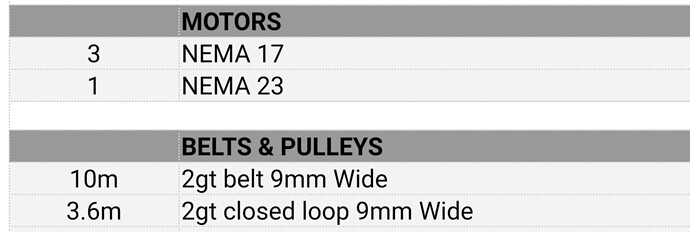How do I adjust the y-axis belt tension? I figured out the x-axis.
On the back of the machine are holes that line up with the belts on each side of the frame. You need stick a long screwdriver into the holes to reach the tensioning mechanisms.
Ah, ok. Thank you. I will take a look. How tight should they be? My x-axis felt really low loose so I tightened it. I notice some sloppiness and think it might be the belts.
You want them tight enough so there is good tension. I know that isn’t very good answer, but you want to have enough tension to keep the belt engaged on the pulleys. If you tighten them too much you can get excessive wear.
In 3D printing, with some similar constraints and sizes, one rule of thumb has been that they should give off a short, low frequency note when you pluck them. If they don’t vibrate enough to hear a tone at all, they are too loose; if they make a high note or the tone lasts longer than a fraction of a second they are too tight.
(Won’t work for my laser with nearly 1.5 meter belt in X, and almost 5 meter belt in Z, but that’s my own fault. Should be fine on your K40!)
If it makes you feel any better we are going to build a Y-1200 next. Look at these requirements for belts…
Yeah, that’s not too much smaller than the monocle.
I should probably be using 9mm belt in mine. But 6mm for proof of concept. I can buy 9mm pulleys and real Gates belt from Filastruder to upgrade. I’ll have to redesign a couple parts if I do that, though.
Does 3 NEMA17 and one NEMA23 mean that it includes a rotary?
No, two NEMA 17 on the y-axis, one on x-axis, and the NEMA 23 on z-axis. On this design, the y-axis is significantly longer than the x-axis.
Here is a link to the designer’s site. He has links to his videos and the full (paid) build guide.
Ah, I like one motor per axis; that way the motors on one axis can’t be out out of sync with each other. It’s why I put a torsion rod across the back of the monocle instead of putting a motor at each end. It also keeps the gantry square when I move the head when it is powered off. It also avoids putting racking forces on the linear rail bearings. (Right now, with 3D printed parts mating the X gantry to the rails, the plastic would absorb the racking forces; if I make aluminum parts, I would care about potential damage to the bearings.)
I found that linear rail is now so affordable that I changed from my original plan to use openbuilds wheel kits to use linear rail on both X and Y. It ended up being similar in price and should wear far longer.
Oh, also, the tradeoff on the Y-1200 is lower gantry mass (reduced artifacts when vector cutting) for lower laser power (shorter tube). It also rotates the preferred rastering direction.
In case it’s worth knowing, I discovered today that my Z axis could skip, so I tightened the belt. When I got the loop tight enough, I could hear the ~800mm sections of belt twang momentarily when I plucked them.
